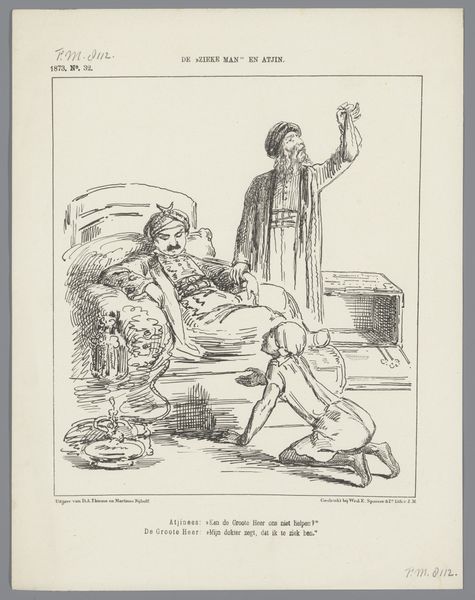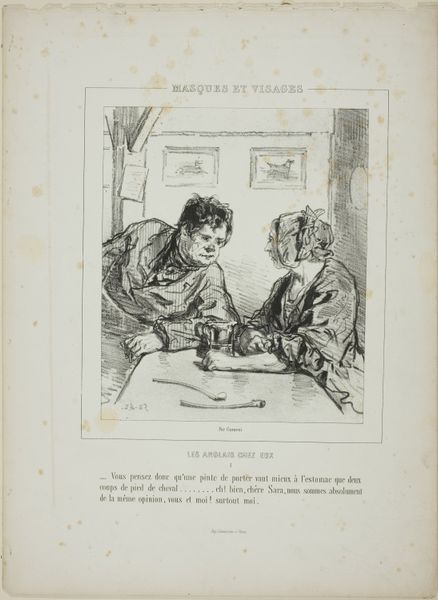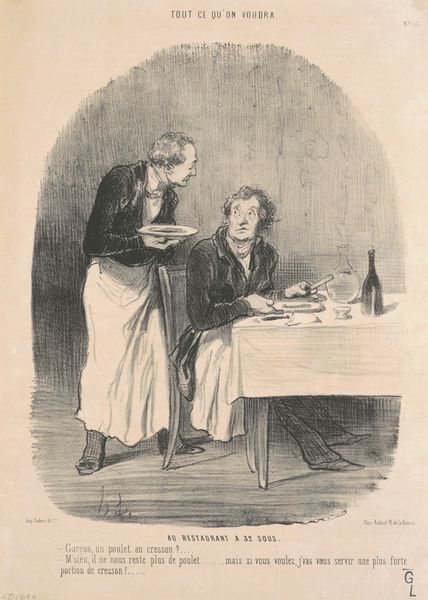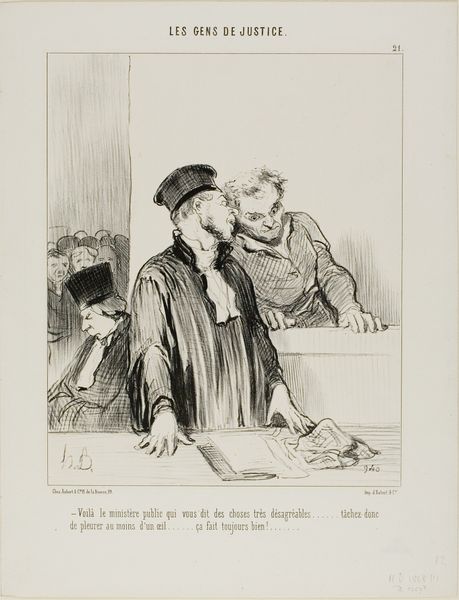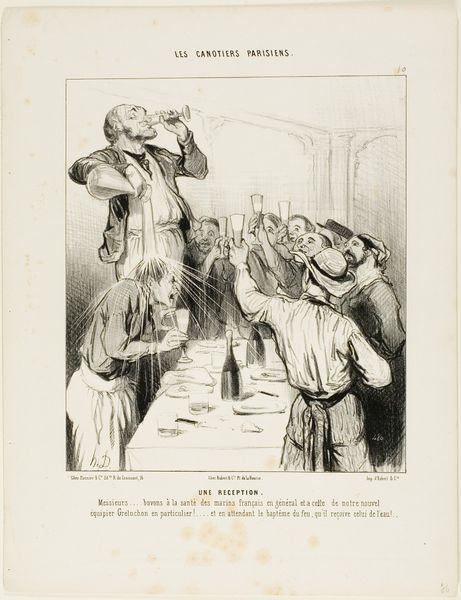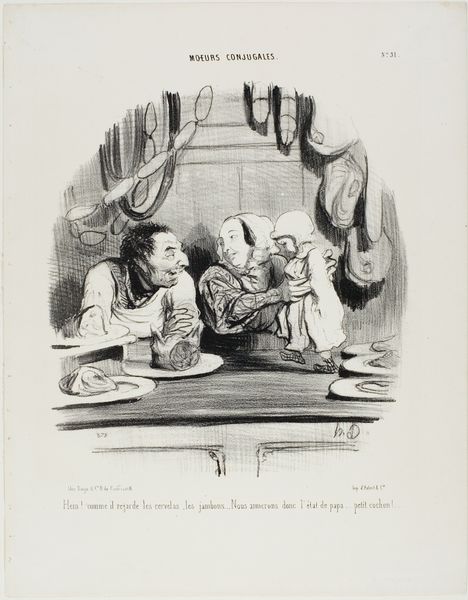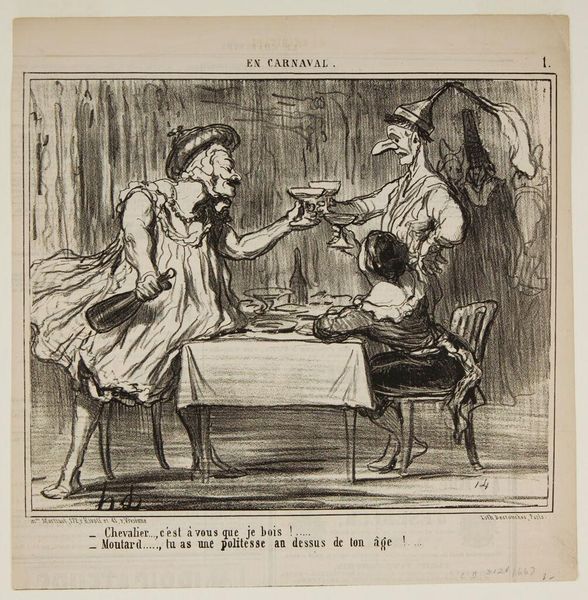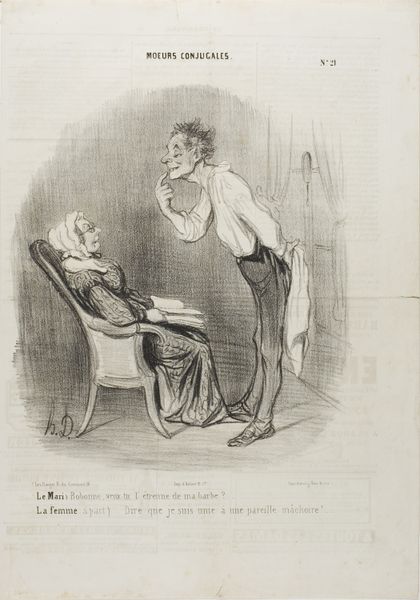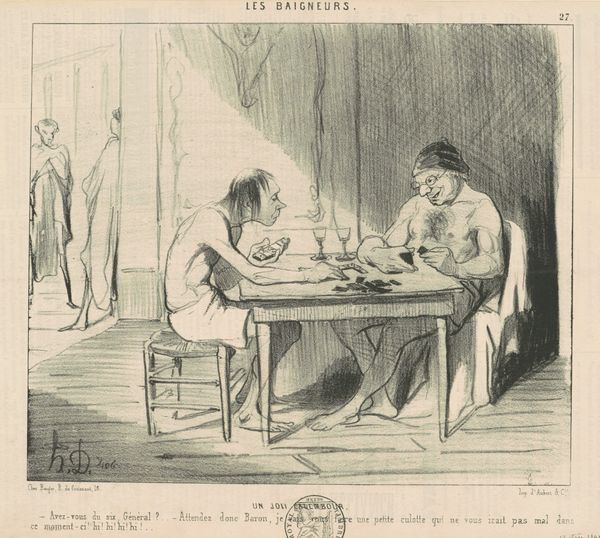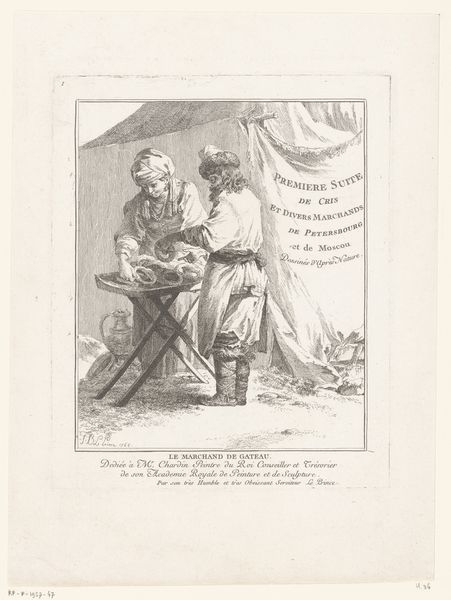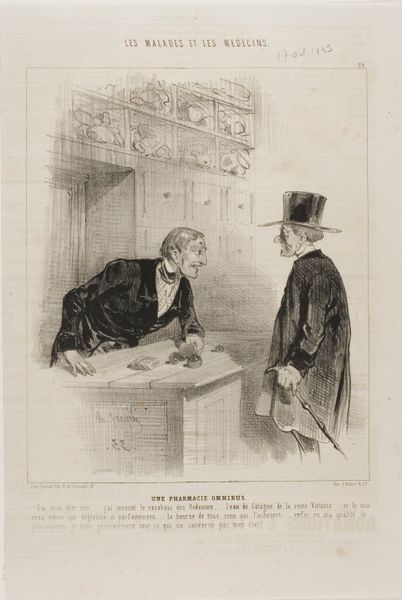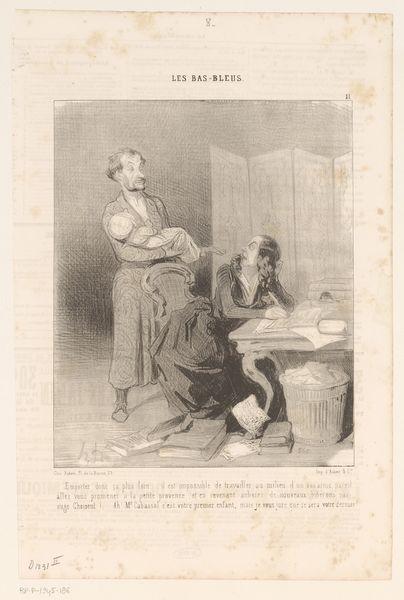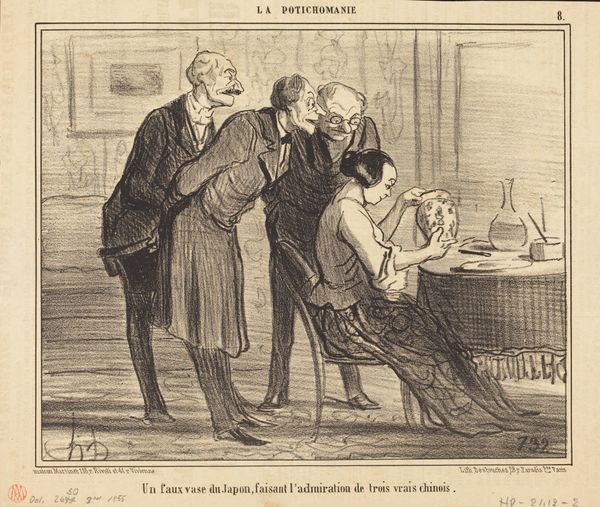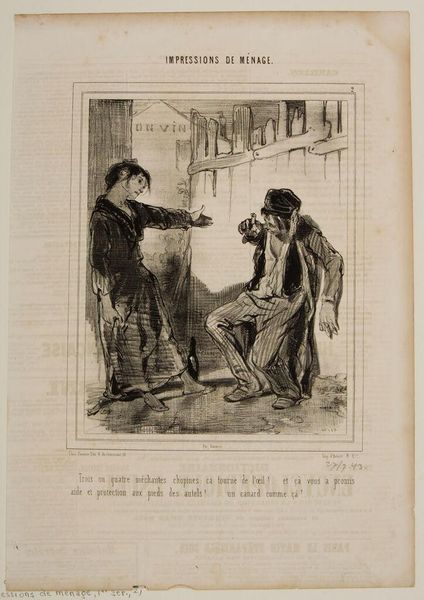
drawing, lithograph, print, pen
#
drawing
#
narrative-art
#
lithograph
# print
#
caricature
#
figuration
#
romanticism
#
pen
#
genre-painting
Copyright: National Gallery of Art: CC0 1.0
Editor: This is Honoré Daumier’s “L'épée de Damoclès,” a lithograph from the 19th century. It feels like a really tense scene. What's your take on this image, given your understanding of art in its social context? Curator: Well, immediately I see a potent visual commentary on power and anxiety. The "Sword of Damocles" is, of course, an ancient story, but Daumier uses the setting – a somewhat bourgeois dining table – and caricatured figures to bring it into the 19th century. This wasn’t simply an illustration of a classical tale; it became a relevant satire reflecting contemporary anxieties surrounding social status and political power during the French Restoration and later the July Monarchy. The constantly looming threat… how was that used? Editor: Are you saying the print comments on that precariousness and power struggles? That makes sense. I was just seeing the immediate fear of the man under the sword. Curator: Precisely. Daumier’s work often targeted the hypocrisy and anxieties of the rising middle class. The lithograph, due to its accessibility, would have been widely circulated, and the satirical jab would resonate with a broad public keenly aware of shifting power dynamics. The composition, the positioning of the characters, does this reinforce the social dynamic, would you agree? Editor: Yes, the fellow under the sword looks much smaller and helpless compared to the sneering man standing aside. Seeing the political reading here makes it more relevant and powerful than just a scene out of the distant past. It becomes about now! Curator: Exactly. The "now" is exactly what Daumier captured through art; reflecting anxieties through accessible and instantly relatable visuals. Knowing its audience changed how I saw it. Thanks for guiding me here today. Editor: Same here, that was a great historical background. It definitely enriches the meaning beyond the literal imagery for me.
Comments
No comments
Be the first to comment and join the conversation on the ultimate creative platform.
